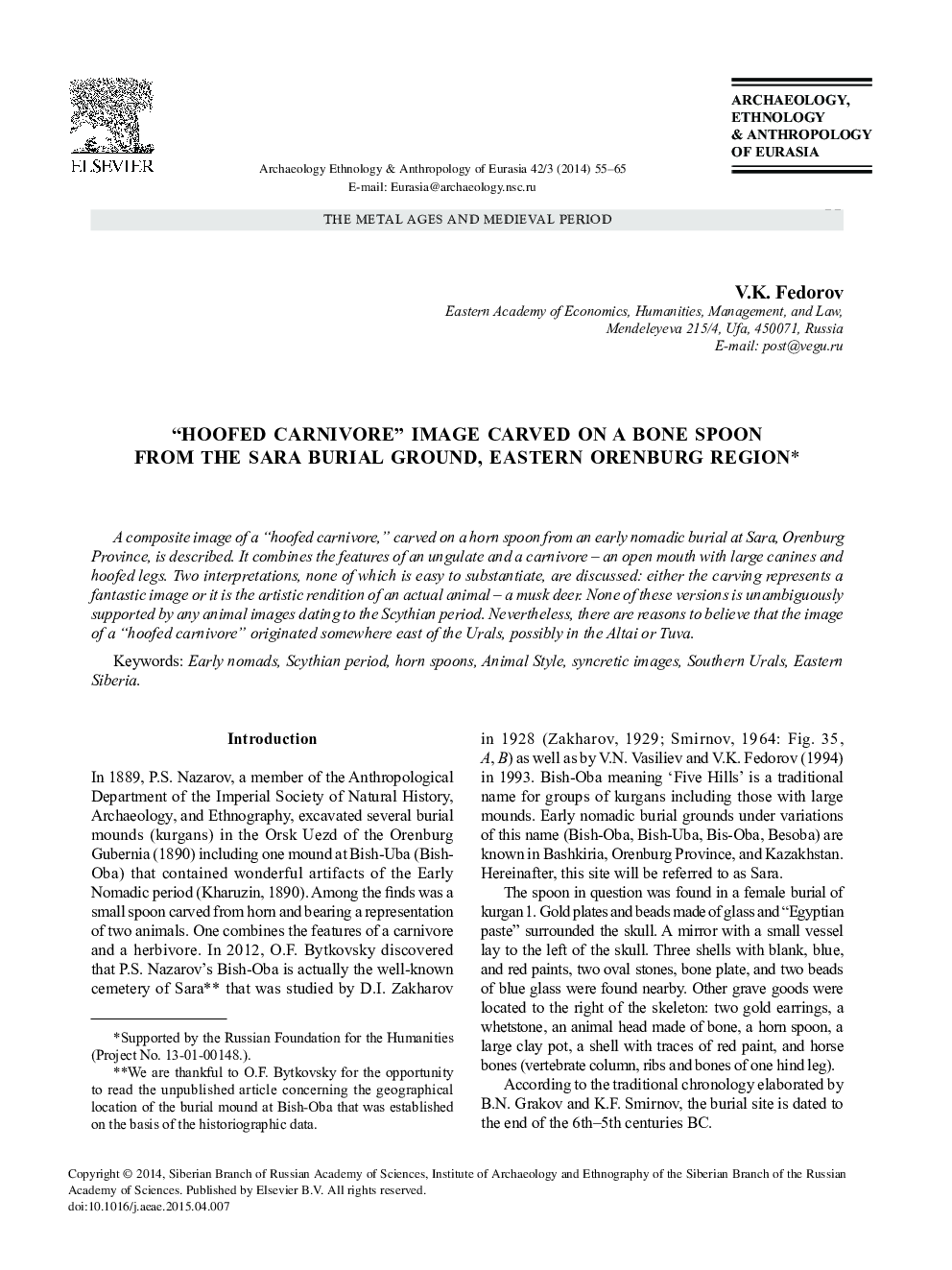| Article ID | Journal | Published Year | Pages | File Type |
|---|---|---|---|---|
| 1034365 | Archaeology, Ethnology and Anthropology of Eurasia | 2014 | 11 Pages |
Abstract
A composite image of a “hoofed carnivore,” carved on a horn spoon from an early nomadic burial at Sara, Orenburg Province, is described. It combines the features of an ungulate and a carnivore - an open mouth with large canines and hoofed legs. Two interpretations, none of which is easy to substantiate, are discussed: either the carving represents a fantastic image or it is the artistic rendition of an actual animal - a musk deer. None of these versions is unambiguously supported by any animal images dating to the Scythian period. Nevertheless, there are reasons to believe that the image of a “hoofed carnivore” originated somewhere east of the Urals, possibly in the Altai or Tuva.
Keywords
Related Topics
Social Sciences and Humanities
Arts and Humanities
History
Authors
V.K. Fedorov,
